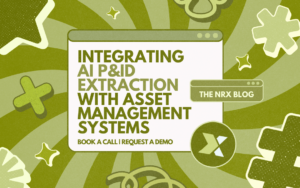A mid‑size manufacturer kept “fixing the data” every quarter, yet the same arguments over KPIs returned. Planners swore schedules were realistic; supervisors insisted jobs were kitted; reliability engineers questioned the failure codes. When the plant manager finally traced the friction back to its source, the pattern was clear: data was being created and changed with no shared rules, no consistent vocabulary, and no verification before it hit the EAM. That is the moment governance moves from theory to practice, when you decide that the way data is made must change if the way work is done is going to improve. Across industries, teams report that about 30% of enterprise time gets wasted because people are battling poor data quality and availability, which is a tax on every maintenance decision you make.

Why Governance Starts with Shared Master Data
The turning point at this plant was choosing to start where data touches everyone: equipment, locations, and materials. That choice reflects mainstream asset‑management thinking. The Institute of Asset Management’s Anatomy frames information as a core enabler of sound decisions across the asset lifecycle; strategy, planning, operations, and renewal, not a back‑office artifact. When your shared records are trustworthy, the knock‑on effects show up everywhere: technicians spend less time reconciling identities, planners stop guessing at parts, and reliability engineers finally compare like with like across sites.
Standards You Can Stand On
The team didn’t try to invent its own language. For reliability and failure information, they aligned attributes and classes to ISO 14224 so that events recorded in one facility meant the same thing in another. For the broader “what makes data fit for use” question, they leaned on the ISO 8000‑1 overview, which lays out foundational principles for information and data quality and explains how the series ties governance, measurement, and improvement together. With those anchors, debates about naming and categorization gave way to shared definitions and analysts could finally trust that a “seal failure” in Plant A was the same thing in Plant B.

Ownership and Create/Change in the Flow of Work
The biggest shift wasn’t technical; it was procedural. Each master‑data domain had a named owner, each site had a steward, and every create/change went through a lightweight staging step before touching production. A standard form enforced required fields, code validation, and duplicate checks; stewards sent back anything that didn’t meet the standard. You can call this “governance,” but on the floor it simply looked like fewer surprises. The payoff surfaced beyond meetings: when techs searched the EAM, they found the right equipment the first time; when planners pulled histories, they trusted the story those histories told. Over time, the organization saw fewer “mystery” swings in KPIs because the inputs stopped moving under their feet. If you’ve ever wondered why people spend so long looking for basic facts, IDC’s classic analysis quantified the waste years ago. Firms of 1,000 knowledge workers lose $2.5–$3.5 million annually just searching for missing or mismatched information. Governance attacks exactly that kind of loss in maintenance contexts.
Why the Effort Pays Back
Governance isn’t a cost center when it changes outcomes. With consistent structures and verified records, the plant could base reliability on facts and move toward condition-based decisions. Predictive approaches deliver real savings, organizations typically see 8–12% lower costs than preventive and up to 30–40% versus reactive and uptime improvements, with about 60% of adopters reporting gains that average ~9%. Governance doesn’t create those wins by itself; it enables them by making the data behind your models and schedules trustworthy.
Conclusion
Data governance in EAM isn’t a cleanup project, it’s a daily habit. Start with the shared master data everyone relies on, use common definitions, make ownership visible, and check changes before they go live. Do those few things consistently and arguments fade, schedules hold, and KPIs start to match what the plant actually experiences. Most importantly, teams get time back to plan, solve root causes, and improve reliability.
Integrating AI P&ID Extraction with Asset Management Systems
ISO 14224 vs Other Maintenance Standards: What Sets It Apart?
Building Trust in Your Asset Data: Strategies for Governance
Share this article




